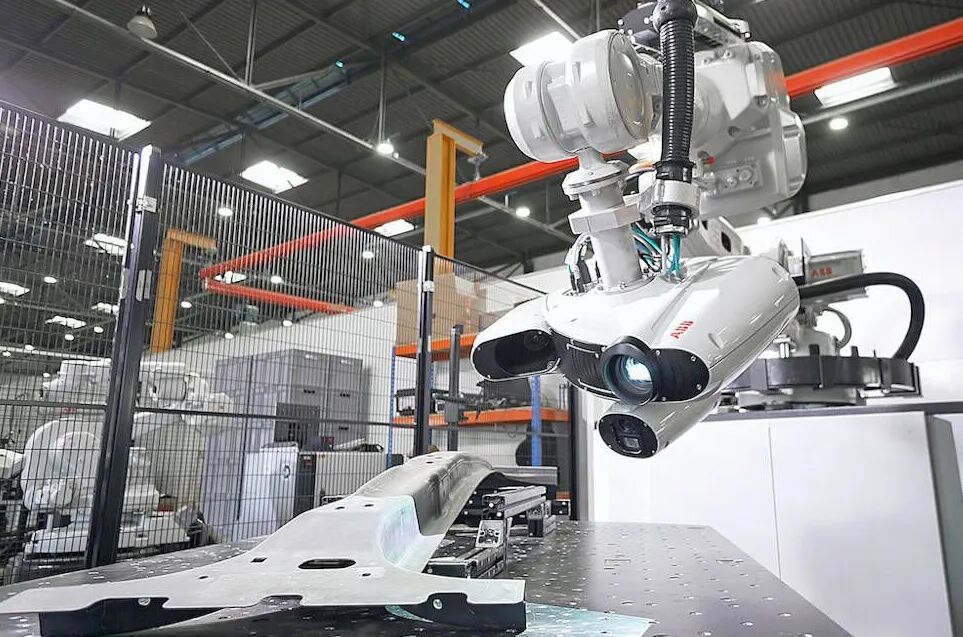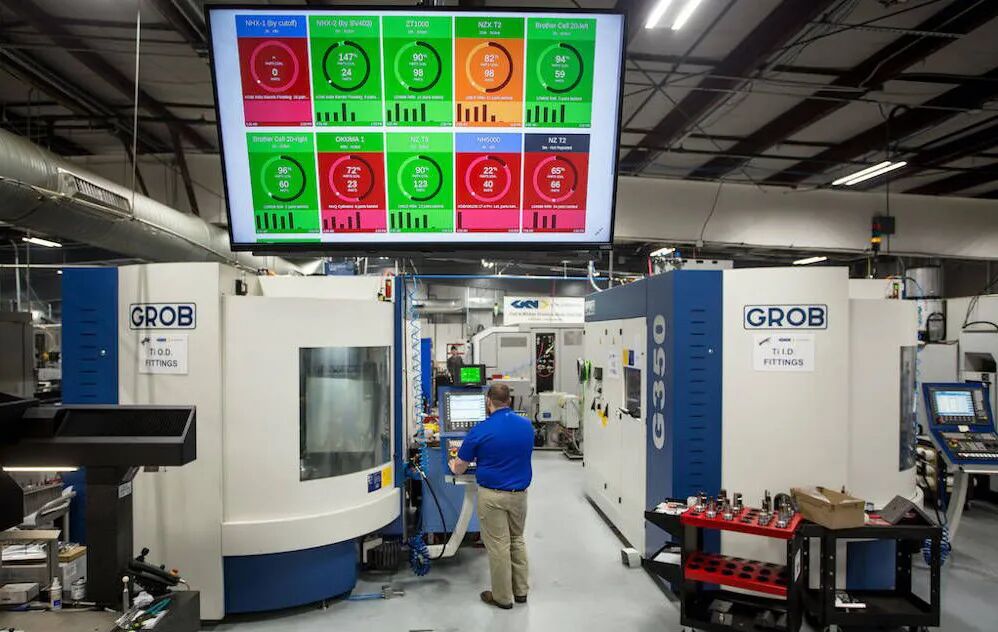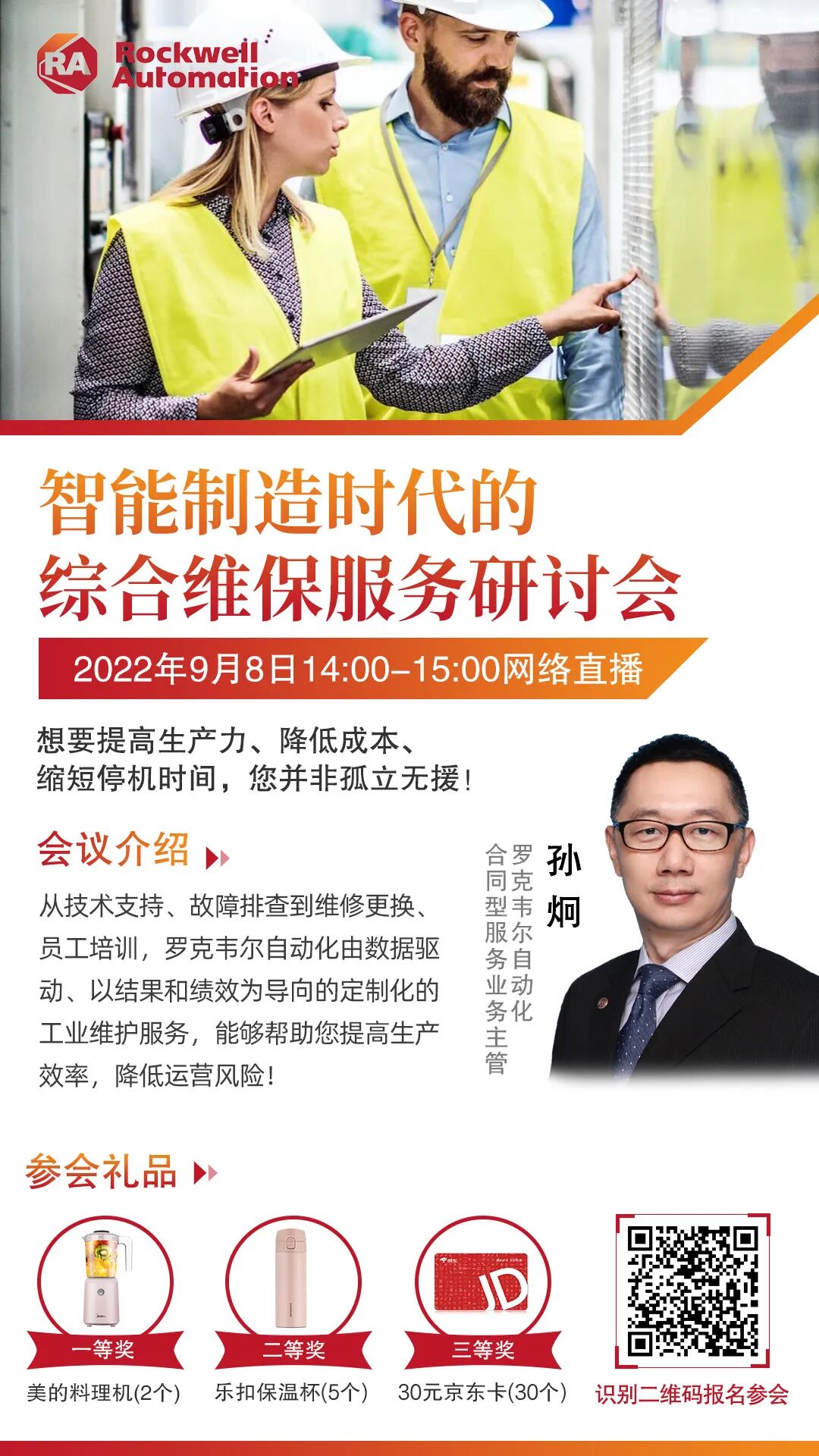

Image Source: A3 / ABB
Author | Tanya M. Anandan, A3
“
Through the Industrial Internet of Things (IIoT) and Artificial Intelligence (AI), manufacturing enterprises can achieve higher productivity and better information insights to create future-ready factories.
”
The IIoT lays the foundation for future factories, which are smart, interconnected, and ready to adapt to any challenges that the industry may bring. IIoT requires a new mindset, new technology investments, collaboration between Information Technology (IT) and Operational Technology (OT), as well as confidence in data and trust in AI, which will gather, analyze this data, and then take action.
For automotive original equipment manufacturers, the application of Industry 4.0 has been underway for some time. Other manufacturing sectors, especially many small and medium-sized manufacturers, may take longer to implement Industry 4.0. But that day will certainly come. The insights gained will help factories make decisions faster and more confidently than ever before.
From remote monitoring and predictive maintenance to quality forecasting and virtual debugging, every manufacturer can take steps to ensure their factories are future-ready. Start small with the right data and think smartly.
Connectivity and the Right Data
“Connectivity and data collection are key drivers for the future of manufacturing,” said Václav Švub, head of global digital and innovation business line for ABB’s automotive, robotics, and discrete automation business. “We see more and more companies having clear digitalization plans. They want to become data-driven companies. Two or three years ago, everyone was struggling with the question of what digitalization meant for us. Now, we are slowing down the transition from pilot and proof of concept to real projects with tangible benefits.”
Švub stated that there is still a long way to go before a large number of adaptive manufacturing or data-driven companies emerge. Currently, the application of AI is mostly isolated and on a small scale. Predictive maintenance and quality forecasting are also in use, but they remain isolated and cannot operate across the entire production line or factory.
“Manufacturers must understand that there is no one-size-fits-all solution,” Švub said. “If you want to implement and benefit from digitalization, it largely depends on where you are now and what you want to achieve. Some want to achieve all digitalization at once. But the best way is to break it down into smaller steps to tackle simpler tasks. Start with smaller projects before moving on to more complex or larger-scale projects.”
Patrick Matthews, global automotive assembly manager at ABB, stated that sorting through all the data and extracting specific data that can lead to meaningful decisions can be a challenge. However, it is a necessary task. “You have to step back and first determine how to handle this data,” he said. “How to analyze? Who will analyze? Can you create an algorithm or application to analyze? Because ultimately, what our customers really want is to produce more parts and reduce manual operations to lower costs.”
To obtain the right data, it is necessary to dig deep into the manufacturing process. Matthews said, “Sometimes, you have to consider getting data from places you hadn’t thought of. For example, we have had a very complex axle manufacturing process for years. When customers have issues, we can send someone to the factory and quickly analyze what is happening by just looking at a few parts of the process. What we want to do is to let machines self-correct. This is the stage we are about to enter.”
Now, adding a camera to simulate human inspection of parts can solve problems and elevate it to another level. If you are just running machines, you only need some data, but if you want to go further, you may need a subset or even different levels of data. The key is to collect the right data, understand the data, and then use applications that can analyze the data. Obtain valuable insights to bring meaningful changes to customers.
Digital Application Solutions for Manufacturing
A typical digital application is the Robot 3D Quality Inspection (3DQI) system. This solution uses IIoT connectivity, configured sensor robots, and deep learning algorithms to perform automatic quality control on manufactured parts in online and offline inspection units. The system uses a 3D white light optical sensor that scans millions of points each time, quickly recording detailed geometric and surface data and comparing it with digital CAD models. Comprehensive data analysis is processed in real-time, allowing for quick feedback on changes in the production process. Digital records support traceability and enable users to adjust their processes to prevent failures and improve overall quality and productivity.
The 3D inspection system is part of ABB’s IIoT solution Ability™, which leverages connectivity, data analysis, and AI for better decision-making. During the pandemic, the platform’s remote connectivity solutions successfully helped manufacturers maintain operational activities.
ABB’s simulation and offline programming software RobotStudio can be used for virtual debugging and running a digital twin of the production line in a virtual environment. Švub said, “Last year, we improved the virtual debugging capabilities. We integrated more standard protocols so that you can connect to your devices via OPC UA, connecting to your PLCs, including both physical and virtual devices. You can not only return the robot’s data to Robot Studio but also return data from other devices running via OPC UA to RobotStudio (a cross-platform, open-source standard for data exchange). This means you can simulate, test, and validate the entire behavior of robot cells or robotic production lines.”
Especially now, due to the impact of the pandemic, more and more companies want to conduct virtual debugging. This is a great solution that allows for remote connections without constantly sending engineers around the world. This trend is growing, and customers are starting to trust these technologies, thus being more open to factory acceptance testing (FAT), even allowing some acceptance to be conducted in a virtual environment.
The virtual debugging solution using digital twin technology leverages IIoT connectivity and data analysis to simulate robot cells in a virtual world to predict and optimize how processes will run in the real world. This trust is crucial for future innovations. For Švub, being prepared for the future means better achieving digitalization. “We are not only collecting data from robots but also from the process. This will bring greater value to customers.”

▎Providing real-time production data visibility with industrial data platforms to identify bottlenecks, predict machine failures, improve quality, and build workflows for automated machine operations.
Smarter Sensors and Future-Ready IO-Link
For Will Healy III, marketing manager for Balluff Americas, the pace of digitalization is still not fast enough. “I have been doing presentations since 2012, when we were discussing ‘putting more things on Ethernet.’ This was basically calling for the implementation of IIoT, just that it didn’t have a formal name back then.” Healy made an interesting comparison, “If we compare it to the human body, Balluff is like the sensory and nervous system. We are not the brain or the muscle output. We are just helping to collect data from machines to help users get the data they need for analysis.”
The network is the nervous system of IIoT technology. Without this connectivity, nothing happens. However, for small and medium-sized companies, the digital transformation can be daunting, especially in the face of limited funding and a shortage of talent across the industry. It is recommended that such companies first consult local integrators and automation distributors to leverage the already installed technology to implement IIoT. Or contact suppliers of installed equipment. They may have available software packages. Many devices now have IIoT capabilities that just need to be turned on.
Today, there are many smart, IIoT-enabled sensors on the market that can be implemented without significant investment or advanced technical knowledge. For small and medium-sized companies, the first step is status monitoring. This is very easy to implement and understand. Status monitoring involves monitoring parts of a machine to understand its different states.
The most basic status monitoring system checks whether each state variable is within threshold ranges and creates an alarm on the PLC or sends a text message or email when it exceeds that threshold. “Then, you can use this data for predictive maintenance or other types of analysis and AI projects.” Healy said, “If you have already implemented automation, the barrier to adding features like status monitoring is very low. If you lack talent in this area, you must look for third-party ‘black box’ or cloud solutions.” When selecting automation components, he advises making informed decisions.
Do not choose the “cheapest and simplest product” you can buy; consider the total cost of ownership. What do you want this device or system to do in 5 or 10 years? You can purchase a little more functionality than you currently need to prepare for future success.
Healy said, “When you choose equipment, especially sensors, if you choose smart sensors, you will not only get on/off quantities but also more diagnostics about the machine, process quality, and what is happening in the process. By choosing smart sensors and using open standards like IO-Link, you can obtain more process-related information.”
Universal, smart, simple, and IIoT-enabled, that is IO-Link, an industrial communication network standard for connecting digital sensors and actuators. From smart pneumatic valves to grippers, over 300 suppliers offer IO-Link-based smart technologies. Healy emphasized the importance of interoperability and standards like IO-Link, which make it easier for machine manufacturers to implement new, future-proof technologies.
Gaining Actionable Insights Through Data Analysis
If Balluff represents sensory input and the nervous system, where does the brain process all the data and understand it? Healy suggests looking at companies like MachineMetrics. “To collect data from machines, you can install a ‘black box.’ Then, you can execute all the aggregation and analysis through AI and provide reports that help you make better decisions.” In this case, the “black box” is actually an edge device and part of an industrial data platform.
Bill Bither, CEO and co-founder of MachineMetrics, said, “We make it very easy for manufacturers to capture their equipment data by connecting to the factory floor network or the machines themselves with edge devices. By connecting to sensors or directly extracting data from machine controls, we automatically convert it into a universal data structure so that even with many different types of machines, the information conveyed by all machines is essentially the same. There, we provide tools to analyze the data and generate valuable insights.” For simpler insights, such as understanding machine capacity and output, these are readily available in the MachineMetrics industrial data platform.
Users can also enrich the data themselves and can configure it specifically based on the current manufacturing type. The platform can provide a complete process automation tool that allows users to build processes and automate workflows around machines. Additionally, this data can be sent to other factory systems, such as production systems and maintenance systems.”
This company has a complete data science team that studies how to obtain the right data and present actionable insights, such as tool wear. “On metal cutting machines, these tools often wear out, producing scrap parts or breaking. We have been able to enrich this data so that customers can understand when to replace tools. Once the data is contextualized, they can use our platform to run custom analyses.” he said.
MachineMetrics has achieved success in the CNC field and later expanded to all discrete manufacturing sectors. Service industries include automotive, medical devices, heavy industry, and aerospace. The industrial data platform is offered as software as a service (SaaS), with an annual subscription. This includes all support, access to customer success teams, and software upgrades. The power of IIoT means access can be available anytime, anywhere.
“It is cloud-based, so as long as you are authenticated, you can access this data from anywhere.” Bither said. “High-frequency computations are completed at the edge, and then the data is sent to a cloud platform where you can contextualize it from elsewhere. Advanced algorithms allow users to see deeper insights, such as trying to simulate experienced operators who can hear what is wrong with the machine. You can simulate this in AI algorithms and then deploy it at scale. That’s what we do: make data accessible and provide tools to simulate human activities in such situations.”
IIoT and AI-driven data collection solutions provide insights anytime, anywhere, including utilization reports, status monitoring, real-time production dashboards, and downtime alerts.
Key Concepts:
■ To obtain the right data, it is necessary to dig deep into the manufacturing process.
■ Gain actionable insights through AI-based data analysis.
Consider:
What benefits can IIoT and AI-driven data collection solutions bring to enterprises?
– END –

This article is from CONTROL ENGINEERING China, published in July 2022.IIoT + AI, How to Achieve Future-Ready Manufacturing?Recommended IssueApplication Case | Edge Controllers Enable Data Integration and ControlBlack Hat! How Can Manufacturing Companies Ensure Network Security?The Future of PLC/PAC: Stronger Emphasis on Configurable Data Processing and SecurityBreaking News | PROFINET over Ethernet-APL Will Transform Process Industries!Handheld, Wired, Wireless, Software—How to Choose the Right Vibration Monitoring Method?We invite you to join the Industrial Automation Community.We are building a community of professionals in the field of industrial automation.Join us to share knowledge and insights.